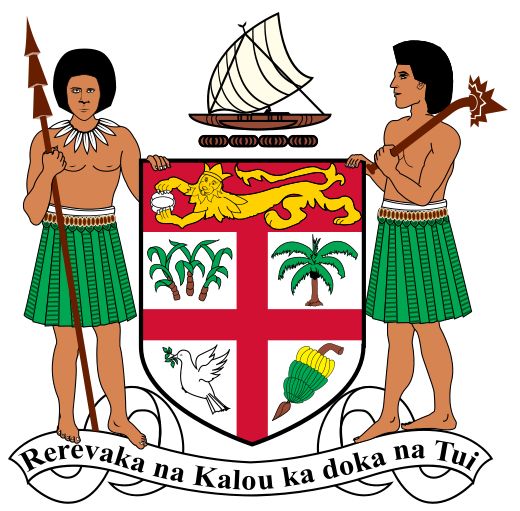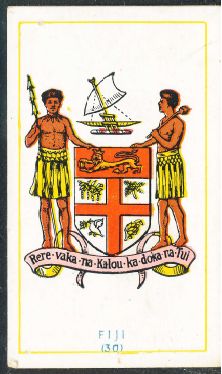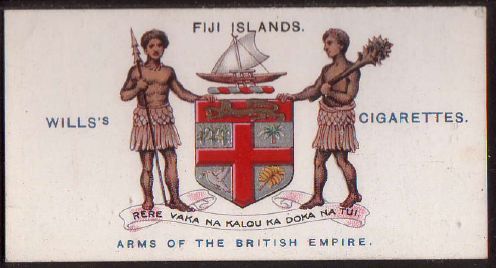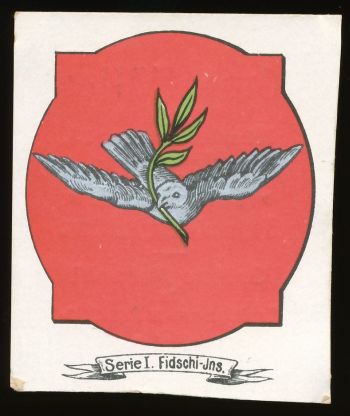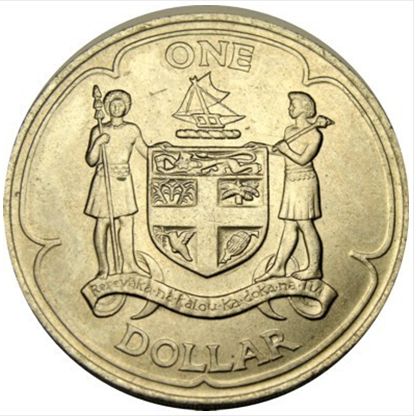National arms of Fiji: Difference between revisions
Knorrepoes (talk | contribs) |
Knorrepoes (talk | contribs) m (Text replacement - "|center]] ====Origin/meaning====" to "|center]] ====Official blazon==== ====Origin/meaning====") |
||
| Line 8: | Line 8: | ||
[[File:Fiji.jpg|center]] | [[File:Fiji.jpg|center]] | ||
====Official blazon==== | |||
====Origin/meaning==== | ====Origin/meaning==== | ||
Revision as of 16:59, 10 January 2016
| Heraldry of the World Civic heraldry of Fiji |
THE NATIONAL ARMS OF FIJI
Official blazon
Origin/meaning
The arms were officially granted on July 4, 1908.
The chief shows the English lion, holding a cocoa pod. The main shield shows the Cross of St. George and in its quarters sugarcanes, a coconut pal, a dove and a bunch of bananas.
The lion and red cross refers to the ties with England. The cocoa pod, suagrcane, banana and palm tree refer to the main crops on the islands.
The dove was the main element of the flag of King Cakobau, the first King of Fiji.
The crest shows a local canoe with outrigger and the two supporters are Fijian warriors dressed in mulberry bark tapa skirts, one of them holding a lance and the other a pineapple mace.
The motto displays the national motto "Rerevaka na kalou ka doka na Tui" (Fear God and honour the King).
| The arms on some cigarette cards |
| |
| Quite different arms shown in a pre 1914 album |
||
| The arms on a coin |
Contact and Support
Partners:
Your logo here ?
Contact us
© since 1995, Heraldry of the World, Ralf Hartemink 
Index of the site
